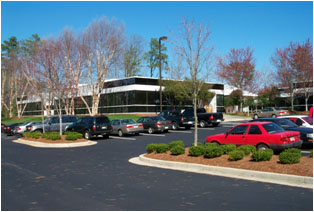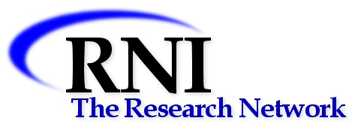About RNI
 RNI supports a number of different research topics and fields of expertise. The central facility also includes a fabrication shop, render farm, internet servers, a rapid physical-to-virtual digitization capability, and a video demonstration area.
RNI supports a number of different research topics and fields of expertise. The central facility also includes a fabrication shop, render farm, internet servers, a rapid physical-to-virtual digitization capability, and a video demonstration area.
RNI was originally incorporated in 1993 and was granted S-Corporation status in 1998 by the state of Georgia. RNI offsite facilities now include Florida and California.
The Research Network is founded on the principle that the people skills produce the company. That principle is the very foundation of the distributed research approach; better, faster, cheaper. RNI personnel are innovative and the corporate structure allows for this at a lower cost.
RNI people are a unique collection of scientists, software developers, modelers, and engineers which combine in an unique way to solve most any problem. Many of us come from major university research departments and other industry leaders. A few related references are:
- Multiple Camera Self-Location in Augmented Reality Simulations, Saffold, Bewers, Shoaf, Garrity, I/ITSEC 2019
- 3D Spatial Audio Extraction and Demonstration System for Augmented/Mixed Reality Simulations, Saffold, Shoaf, Garrity, I/ITSEC 2017.
- Virtualizing Humans for Game Ready Avatars, I/ITSEC 2015
- A Decision Aid for Optimizing Experimental Design Involving LVC, Bruni, Saffold, et al I/ITSEC 2014
- Principles of Modern Radar : Volume III (MMW Applications), Melvin, Scheer, Saffold, SciTech Publishing, Second Edition, 2014
- An Immersive Live / Virtual Bridge Approach with Ultra Wideband Tracking Technology, Roberts, Saffold, Garrity, I/ITSEC 2013 Conference Proceedings
- Virtual Locomotion Concepts and Metrics Study: Experimentation and Results, I/ITSEC 2012 Conference Proceedings
- 3D Spatial Audio Extraction and Presentation from Immersive Game Based Simulations, Roberts, Saffold, Garrity, I/ITSEC 2011 Conference Proceedings
- Principles of Modern Radar : Volume I (Propagation Mechanisms), Richards, Scheer, Holm, Saffold, SciTech Publishing, Second Edition, 2010
- Developing Collective Training for Small Unmanned Aerial Systems Employment, Durlach, Priest, Martin, Saffold, MODSIM paper and conference, Virginia, 2009
- Technical Issues in Distributed Online Multiplayer Gaming Training Systems , Lampton, Martin, Saffold, SALT Confernce, Washington DC, February 2009
- Assured Communications and Combat Resiliency: The Relationship between Effective National Communications and Combat Effectiveness, Allgood, Saffold, et al, Proceedings of the SPIE, Orlando, FL, April 2009
- Friend or Foe? A Digital Dog Tag Answers, Saffold, New York Times Review, By Noah Shachtman, Published: April 15, 2004, New York Times
- Radar -Acoustic Interaction for IFF Applications, Saffold, SPIE 1998, Radar Sensor Technology III
- The Effects of Multipath on the Blending of Target and Clutter Data,RSG8 NATO Panel Workshop on MMW Data Reproducibility, Comparability, and Blending, Eglin AFB, Fla., Saffold, J.A., Green, A.H., Mullins, J., May 1990
